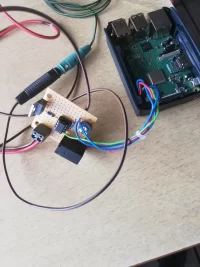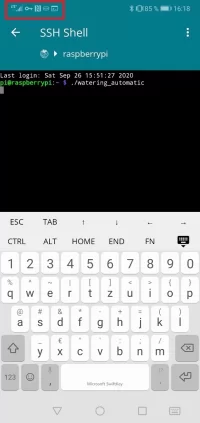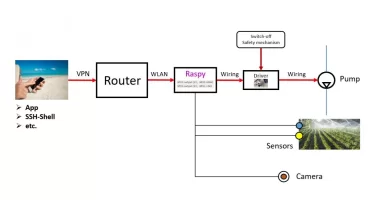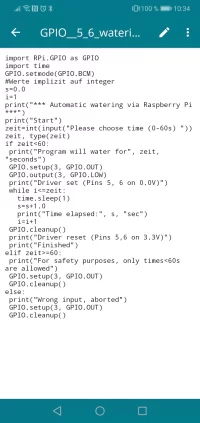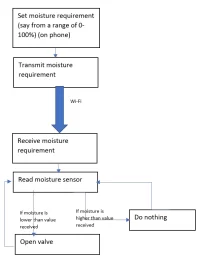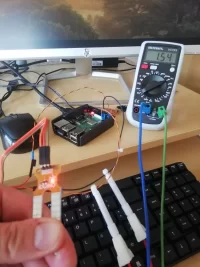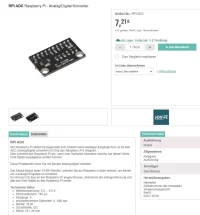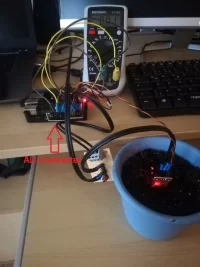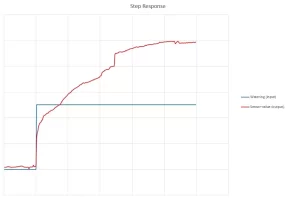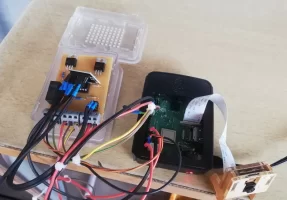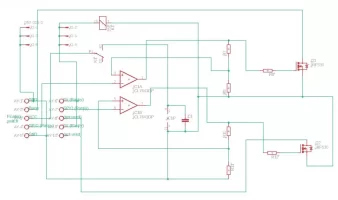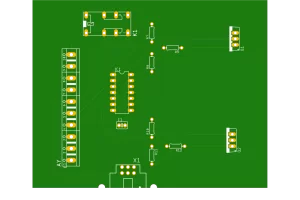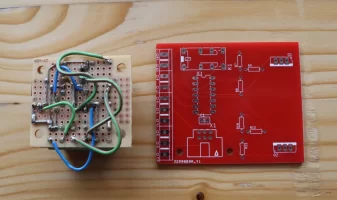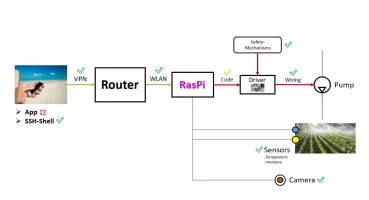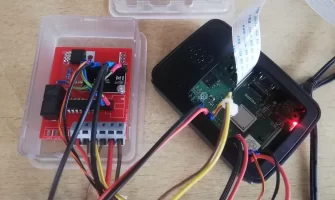as long as I'm confident I'll get an email (if) there ever is a problem... such as the electric going out to that outlet (bad wiring?) or the water stopping on that line... or the hose breaking and water never reaching the plants... there's a million ways that it can go wrong, and then my precious plants die....Setting it up the way you envision (full remote control outside the home) is definitely possible to do, for an embedded system it might be easier to code another device (ESP32 or another low power chip with wifi capability) other than a raspberry pi due to the OS complicating things. However if you choose not to go that way and focus on only controlling one device when you're nearby then BlueTooth is probably your best bet. There are other methods such as Zigbee which could allow you to do mesh networking (to control multiple seperated devices at once) which would really help you market it as a modular solution to fit any type of garden. The chips are pretty cheap too.
As for market need, if it was fully automated so I could set and forget, then I for one would definitely be willing to pay for an effective, reliable and easy to use solution.
Questions:
what happens when electric goes out?
what happens when water goes out?
what happens when pi gets fried by lightning and can no longer function? do I get a note there is a problem?
what happens if water pump fails (pi still sends signal, but no water comes out)
what happens if pump works, but no water reaches plants (hose broke)?
what happens if plants get infected with bugs and die, but you keep putting water on it, but it doesn't get used... does it automatically send less water?
what happens when the plant grows and needs more water?
I love finding problems/ solutions.... the above are questions that any serious customer wants to have covered, but a lot of them won't think about asking.
Dislike ads? Become a Fastlane member:
Subscribe today and surround yourself with winners and millionaire mentors, not those broke friends who only want to drink beer and play video games. :-)
Membership Required: Upgrade to Expose Nearly 1,000,000 Posts
Ready to Unleash the Millionaire Entrepreneur in You?
Become a member of the Fastlane Forum, the private community founded by best-selling author and multi-millionaire entrepreneur MJ DeMarco. Since 2007, MJ DeMarco has poured his heart and soul into the Fastlane Forum, helping entrepreneurs reclaim their time, win their financial freedom, and live their best life.
With more than 40,000 posts packed with insights, strategies, and advice, you’re not just a member—you’re stepping into MJ’s inner-circle, a place where you’ll never be left alone.
Become a member and gain immediate access to...
- Active Community: Ever join a community only to find it DEAD? Not at Fastlane! As you can see from our home page, life-changing content is posted dozens of times daily.
- Exclusive Insights: Direct access to MJ DeMarco’s daily contributions and wisdom.
- Powerful Networking Opportunities: Connect with a diverse group of successful entrepreneurs who can offer mentorship, collaboration, and opportunities.
- Proven Strategies: Learn from the best in the business, with actionable advice and strategies that can accelerate your success.
"You are the average of the five people you surround yourself with the most..."
Who are you surrounding yourself with? Surround yourself with millionaire success. Join Fastlane today!
Join Today

